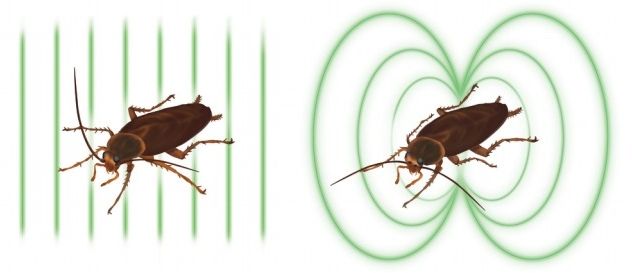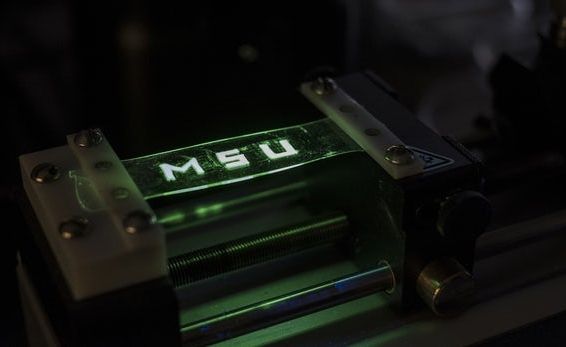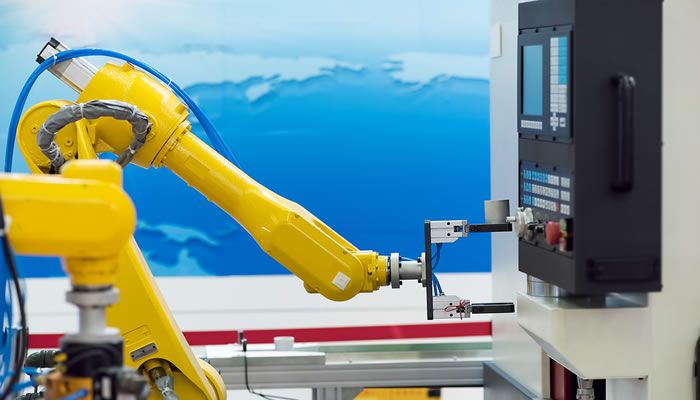![]() ⚡
⚡
Category: electronics – Page 87
3D Body Scanner
Can this 3D body scanner help you get fit?
These new electronic glasses allow the legally blind to see
Toronto-based eSight Corp. has launched a pair of electronic glasses that allow the legally blind to see. The eSight3 glasses use high-tech image processing to give those who are legally blind the chance to experience what it is like to have 20/20 vision.
Users can control a variety of functions that are important for vision, including magnification, contrast, brightness and focus. Videos projected onto two OLED screens in front of the eyes allow the user to see the different functions in action.
ESight glasses are ideal for a number of conditions, including for people who have optic nerve hypoplasia, ocular albanism, forms of glaucoma and more, according to the company.
Liquid Light: Scientists Unite Light and Electricity to Make Electronics Smaller and Faster
In Brief Researchers have found a way to bridge the gap between light and electricity—the two main components of current data transmission. Using the liquid light produced by polaritons, they were able to unite the two, a development that would lead to faster data transmission.
As we reach the smallest units known to physics, it’s becoming more apparent than ever: Moore’s Law can’t hold strong forever. But although it seems we are exhausting the extent to which we can miniaturize processors (as far as we know now), it seems Moore’s Law won’t be scrapped for good…at least not entirely.
Researchers the world over are coming up with different approaches to pack more power and speed into the smallest particles. And a new study from the University of Cambridge, in collaboration with researchers from Mexico and Greece, is adding to the arsenal. Researchers found a way to unite electricity and light using a miniature electro-optical switch that creates and manipulates liquid light—as in similar glowing fluids like those in glow sticks.

Creating integrated circuits just atoms thick
A new technique using liquid metals to create integrated circuits that are just atoms thick could lead to the next big advance for electronics.
The process opens the way for the production of large wafers around 1.5 nanometres in depth (a sheet of paper, by comparison, is 100,000nm thick).
Other techniques have proven unreliable in terms of quality, difficult to scale up and function only at very high temperatures — 550 degrees or more.

Inkjet-printable stretchy circuits could lead to huge e-wallpaper screens
When and if that hurdle is overcome, the researchers say that the easily-fabricated stretchy technology could begin to find commercial applications, in devices like rubbery wrist-worn health trackers, deformable tablets and electronic wallpaper that can make huge screens out of entire walls.
“We have created a new technology that is not yet available,” says Wang. “And we have taken it one big step beyond the flexible screens that are about to become commercially available.”
The research was published in the journal ACS Nano.

Nan Goldin: Photography Is “a Chance to Touch Someone with a Camera”
Some small write-ups out today on the NY Times piece coverig transhumanism, including in The Paris Review, a well known literary publication for writing folks out there: https://www.theparisreview.org/blog/2017/02/09/touch-someone…ther-news/ &
http://transhumanist-party.org/2017/02/10/nyt-magazine-zoltan/ &
In today’s arts and culture news roundup: Nan Goldin on the first photographer she loved; the transhumanist search for sexbots; singing “Ode to Joy”; & more.


Research details developments in the mid ir sensors market
Nice.
Orbis Research Present’s Mid IR Sensors Market Shares, Strategies, and Forecasts, Worldwide to 2022 enhances the decision making capabilities and helps to create an effective counter strategies to gain competitive advantage. Report explores the Key Players, Industry Overview, Supply and Consumption Analysis to 2022.